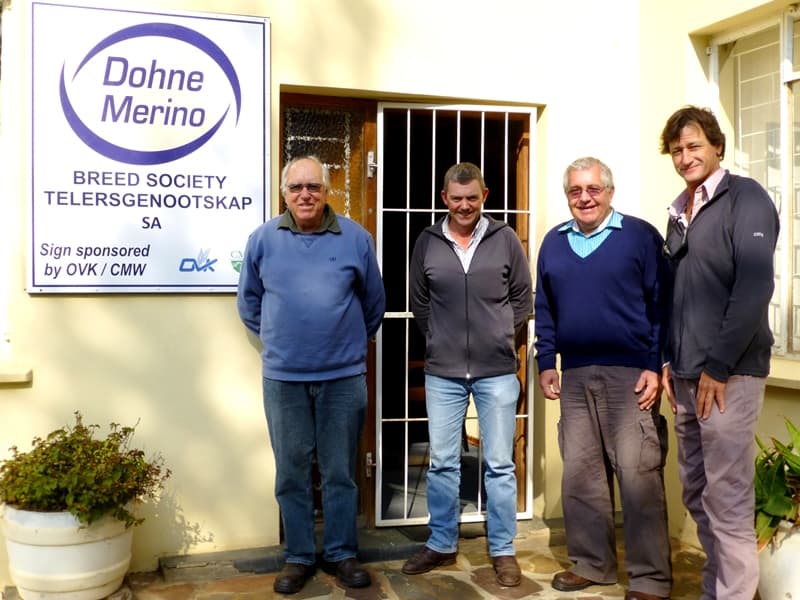“Adapt or Die”
The Daily Bleat | 1st May 2014
Cameron McMaster, a former manager of the Dohne Merino Breed Society of South Africa, spoke yesterday at the Merino 2014 during the plenary session themed, “Adapt or die”.
The session was chaired by Tom Ashby and also featured as speakers Frikkie Neser, Buks Olivier and Tino Herselman.
McMaster used the story of the Dohne Merino to explain the process of adaption to the needs of the industry. He dedicated his presentation to “all Dohne Merino breeders who have contributed to the development of the breed.”
According to him, Dohne Merinos were especially bred in the 1960’s with the objectives “to breed well-adapted Merino.” Next he referred to six events which shaped the modern-day Dohne. One of these illustrates clearly how outcomes determine qualities: in 1978 all competitive shows were “scrapped”.
This meant that “the success of a stud was now determined by performance in a commercial environment, and not in the show ring, ” he said.
The next great adaptation came in the 1990’s: “Up to (this stage) we were fixated on fleece weight,” he says. It was discovered that nearly all the top Dohne breeders were producing excessive wool. This meant that they had begun to deviate from their original dual-purpose goal. Thus a new focus was established, namely both body weight and wool in equal measures.
Over time the effect was again that the growth or body weight component became more prominent, to the point where the Dohne today is indeed a “well-adapted” and balanced breed.
McMaster also added that the Dohne was introduced into Australia in 1998, where it flourished in a “better environment”, leading to “better results”.
“Adapt or Die” – Plenary Session – World Merino Conference – 30 April 2014
By Cameron McMaster cameron@haznet.co.za
Summary
By introducing genes for fertility, prolificacy, growth rate, carcass quality and hardiness into the local Merino by officials of the Dept of Agriculture at the Dohne Agricultural Research Station in South Africa more than 70 years ago, a new dual-purpose Merino was developed which would eventually combine fine merino wool with high fertility and prime lamb production. This paper describes how, with the application of innovative breeding systems, the Dohne Merino, as the new breed was known, was improved to a level where it has enabled sheep breeders worldwide to adapt their enterprises in various ways to increase productivity and profitability.











 Facebook
Facebook YouTube
YouTube Instagram
Instagram